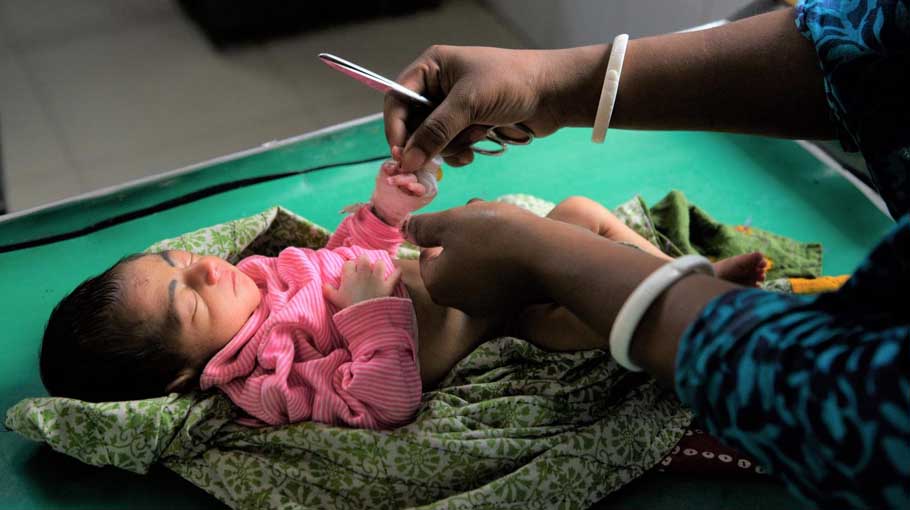Huge success in reducing infant, maternal mortality

Bangladesh has achieved a huge success in reducing infant and maternal mortality rates in the last five decades, securing the top position in South Asia.
According to World Bank estimation, the current infant mortality rate for Bangladesh is 21 deaths per 1000 live births making 85 percent decline from 1971 as the rate was 141 deaths during Bangladesh's independence. Infant mortality rate in Pakistan is now 55, much higher than Bangladesh, but it was lower in Pakistan than in Bangladesh in the year when Bangladesh achieved independence. Infant mortality rate for Pakistan was 139 deaths per 1000 live births in 1971.
According to health experts, Bangladesh achieved unprecedented success in every health index in the last 50 years since independence.
United Nations Children's Fund (UNICEF) has already recognized Bangladesh's outstanding success in reducing child (under five years old) mortality rate as Prime Minister Sheikh Hasina received MDG Award-2010 for the country's remarkable achievement in attaining the Millennium Development Goals (MDGs), particularly in reducing child mortality.
According to Health and Family Welfare Ministry, Bangladesh maternal mortality rate was 269 per 100,000 live births in 2009. The ratio has reduced to 165 recently.
The government has set a target to reduce maternal mortality to less than 50 per 100,00 live births.
The sustainable development goal (SDG) 3 has set a universal target, which means Bangladesh has to reduce maternal mortality to less than 70 per 100,00 live births, as well as neonatal (under one-month old) deaths to 12 per 1000 live births by 2030 and child (under-5) deaths to 38 per 1000.
Health and Family Welfare Ministry has set a target to reduce child (under-5) mortality to 20 by 2035.
Field workers of the Directorate of Family Planning has the biggest contributions to reduce maternal and child morality as they reached urgent treatment and first aid to rural people and gave them suggestions.
After the independence, Bangladesh government had put emphasis on maternal health, family planning, child nutrition and so on.
Special importance was also given on different five-year plans, health policy and latest health, population and nutrition programme. Special allocation was also kept at annual development programme (ADP) on those issues.
Annual Global Childhood Report 2019 of the humanitarian organization "Save The Children" says child mortality rate has reduced to a great extent in Bangladesh, Bhutan, India and Nepal in the last two decades.
Among the four countries, Bangladesh has made the highest progress. Child mortality ratio declined 60 percent in Bhutan, 59 percent in Nepal and 57 percent in India while it is 63 percent in Bangladesh in the last two decades.
Health and Family Welfare Minister Zahid Maleque said the government has increased all facilities in reducing maternal and infant mortality.
In 2017, maternal mortality rate during pregnancy was 176 deaths per 1,00,000 which is now 172, he said.
In 2015, infant mortality rate was 20 deaths per 1000 live births but it declined to 18.4 deaths per live births.
He said as per SDG target, infant mortality rate should be redacted to 12 deaths per 1000 live births by 2030.
If all concerned make their best efforts, it will be possible to achieve the target, he hoped.
Family Planning Directorate Assistant Director Matiur Rahman told BSS that 3,364 union health and family welfare centers are providing maternal and child health facilities apart from family planning services across the county.
Of them, 2189 union health and family welfare centers are providing 24 hour safe delivery facilities every day.



